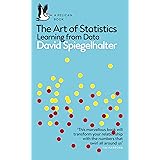Data-must-be-a-data-frame-or-other-object-coercible-by-fortify-not-an-s3-object-with-class-uneval
Data-must-be-a-data-frame-or-other-object-coercible-by-fortify-not-an-s3-object-with-class-uneval in R, it is common to represent data using different types of data structures.
The most common data structure is the data frame, which is a table-like structure where each column represents a variable, and each row represents an observation.
However, there are other data structures in R that are also widely used, such as matrices, lists, and vectors.
In some cases, we may want to convert a non-data frame object into a data frame for further analysis and processing.
To do this, we can use the fortify() function, which is part of the ggplot2 package in R. The fortify() function takes an S3 object and converts it into a data frame that can be used with other R functions and packages.
However, not all objects can be coerced into a data frame using fortify(). In particular, if the S3 object has the class “uneval”, we cannot use fortify() it to convert it into a data frame.
This is because the “uneval” class is a special class that indicates that the object is not yet evaluated, or that its value has been delayed for computation.
So why might an object have class “uneval”? One common example is when working with lazy evaluation in R. Lazy evaluation is a technique that delays the evaluation of an expression until it is actually needed.
This can be useful when working with large datasets or complex expressions that may take a long time to compute. In these cases, lazy evaluation can help to improve performance and reduce memory usage.
Data-must-be-a-data-frame-or-other-object-coercible-by-fortify-not-an-s3-object-with-class-uneval
A simple example of lazy evaluation in R is the delayedAssign() function. This function allows us to create an object that is not immediately evaluated but rather is evaluated only when its value is required. Here is an example:
x <- delayedAssign(sqrt(2)) class(x) [1] "uneval" x [1] sqrt(2) attr(,"class") [1] "uneval"
In this example, we use delayedAssign() to assign the value of sqrt(2) to the variable x. However, since we are using lazy evaluation, the value of x is not immediately computed.
Instead, x is assigned the class “uneval”, indicating that its value has been delayed for computation.
Another example of an object with class “uneval” is a promise object. A promise object is used in R to represent a promise to compute a value in the future.
Data Science Strategies for Improving Customer Experience in R » Data Science Tutorials
When a function is called with an argument, the argument is typically passed as a promise object, which is then evaluated when needed. Here is an example:
f <- function(x) {
print(class(x))
x + 1
}
f(2)
[1] "promise"
[1] 3In this example, we define a function f() that takes an argument x and adds 1 to it. When we call f(2), R creates a promise object for the argument x, which is then evaluated when x + 1 is computed.
In summary, an S3 object with class “uneval” is a special object that indicates that its value has been delayed for computation or that it has not yet been evaluated.
This can occur when working with lazy evaluation or promise objects in R.
When working with such objects, we cannot use fortify() to convert them into a data frame, since fortify() expects a fully evaluated object.
Instead, we must first evaluate the object using standard R evaluation techniques such as eval(), force(), or !is.promise(). Only after evaluation can we use fortify() to convert the object into a data frame.
For example, suppose we have a promise object representing a data frame, like this:
df_promise <- promise({
data.frame(x = 1:5, y = 6:10)
})
class(df_promise)
[1] "promise"To convert this promise object into a data frame using fortify(), we must first use force() to evaluate the promise, like this:
df <- force(df_promise) class(df) [1] "data.frame"
Now that we have a fully evaluated data frame, we can use fortify() to convert it into a format that is compatible with other R functions and packages.
Conclusion
data must be a data frame or other object that can be coerced into a data frame using fortify().
However, if data is an S3 object with class “uneval”, we must first evaluate it using standard R evaluation techniques before we can use fortify().
This is because the “uneval” class indicates that the value of the object has been delayed for computation or has not yet been evaluated, and thus cannot be directly converted into a data frame.
Error-u-used-without-hex-digits-in-character-string-starting-cu »





